By Paul Wilson
Over the years my skills improved, but my income remained modest, and it was clear that the project would have to be done with my own hands, if at all. Was I crazy? The jury is still out on that question. I did cheat. I realized that, sitting quietly in junkyards, was sheet metal in many of the shapes I needed. The 1937 Lincoln Zephyr, for example, had gorgeous rear fenders, with skirts over the wheels.
The tapered roof and trunk of the 1947 Buick Sedanette looked just right. For a small investment, I found and bought these parts. Other cars contributed (sharp-eyed readers may identify them). My idea was that with some snipping and fitting, a bit added or cut off here or there, I could graft together the body I dreamed of, with minimal skills. Finally, I dragged the chassis from my barn, set to work, and in about a year I’d completed the rear half, the teardrop coupe shape that was what most of my early dreaming focused on. And it looked promising.
However, the front end was a problem. The 6C engine and radiator are more than a foot ahead of the 2.9’s, so 2.9 proportions are irrelevant. A lot of contemporary solutions to this heavy frontal mass are, to me, unsatisfactory. What I needed was a design that enclosed the components, was appropriate to 1948 (when the chassis was made), was instantly identifiable as an Alfa, and was beautiful. Finding this solution took me another decade or so. The breakthrough came when I made a model. I set wheels from a Pocher kit at the right width, put wood blocks where the radiator and engine had to go, got some modelling clay, and set to work. In a fairly short time, I came up with a satisfactory design.
By this time my metalworking skills had progressed to the point where I could form what I wanted from sheet steel or aluminum, making things much easier. It’s also a huge advantage to be both the designer and fabricator, because so many design factors are interdependent. For example, I made the center grille first, then spent most of a week on the size and shape of the side openings. Then I went through half a dozen variations on the headlights–straight, sloped, higher, lower, wider, closer together.
Only when a mockup is tacked in place can you see what’s what, from every angle. None of the decisions I made during the process could have been done at the outset. Here is the final result…
I was assisted by friends from around the world who sent me their comments based on progress photos I sent them in emails. One noted that the Zephyr rear fenders looked too wide. I agreed, and gave them more inward taper. Then we decided that their bland rear edge was “too Volkswageny.” A fussy pointed tip was rejected as “too French,” a subtle crease looked better.
Then I modified the trailing edge of the front fenders to carry the theme forward.
My advisors had strong opinions about fender skirts over the rear wheels. One hated all skirts. I favored a plain solid skirt, but several urged me to make slotted skirts, as used on a number of Touring-bodied Alfas of the ‘30s. It was an authentic period feature, they said, and very sexy.
I resisted until it occurred to me that skirts are detachable. I could simply make up a set of each. I could even display the car with a different type on each side, and ask viewers which they preferred.
The mechanical restoration had all the usual adventures: endless cleaning and painting, sending out the brakes, fuel pump, starter, generator and other components for rebuilding, making a radiator and fuel tank.
But it’s never a predictable process. A few sent-out items returned promptly, but that was the exception. A new crank is, I’m told, nearly done–after seven years. Fortunately, I had another. The body spent four years at the paint shop. The instruments took three years. A starter and generator spent two years in Italy. The engine was scattered in pieces at my local machine shop, where the block was bored and the crank seal modified. But then work stopped. Another year passed. Finally, I discovered that the shop boss had developed Alzheimer’s, and couldn’t remember what was done or where everything was. Luckily nothing was lost. Working alone, I make ant-like progress, but it’s steady. When things go out, I don’t know if they’ll ever come back.
I’d never actually driven a 6C2500 until a friend offered me a drive in his. It was a revelation. The all-independent suspension soaked up rough pothole patches with the poise of an E-Type. The steering was precise and finger-light, the brakes as powerful as all-wheel discs. Even the engine, much criticized for inadequacy, had decent torque for normal driving. A bit more power would be welcome, though. Just at this point in my restoration I found that someone in Australia was making a supercharger for these engines that looked and worked just like those on the greatest Alfas of the ‘30s. With one of those, my car would be an all-around pleasure to drive. So I got one.
Like everything else, the interior was to be correct for the period, correct for an Alfa–but comfortable, not limited to diminutive, Nuvolari-sized drivers. A late 1930s American car donated a cowl scoop, for a blast of fresh air on the feet in hot weather. I mounted a rosewood-rimmed, alloy-spoke, replica Bugatti Type 50 steering wheel on an adjustable steering column. Pedals and seat were positioned so that my six-foot frame would have an ideal driving position.
Two big gauges dominate the dashboard of all these Alfas, a speedometer and a tach. Inset at the top and bottom are the fuel gauge, ammeter, clock, and oil temperature gauge. I would never dare drive an old car without a water temperature gauge, but adding one would look wrong. My solution was to put a gauge on a flip-down trap door below the dash, which I could snap closed except when on the road.
After forty-four years, all it needs is some final road-testing and tuning. So, was it a success? My goal was so extravagant that I expected many disappointments and compromises. I wanted a car that was beautiful from every angle, that was enjoyable to drive, that was a true 6C2500 with no anachronistic features. I sneaked in that hidden temperature gauge, the supercharger wasn’t made by Alfa, there’s an electric fan for extra cooling on hot days. But the surprise is how close the result is to my dream of long ago. Not everyone will share my tastes, approve of every decision. But as both creator and owner, I only had to please myself.
Paul Wilson Gallery

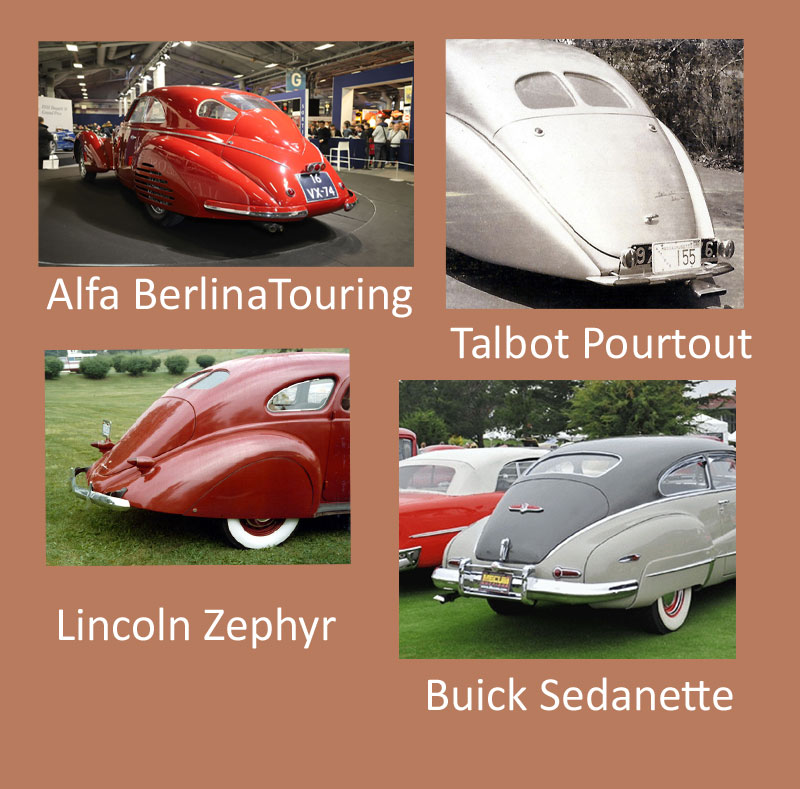
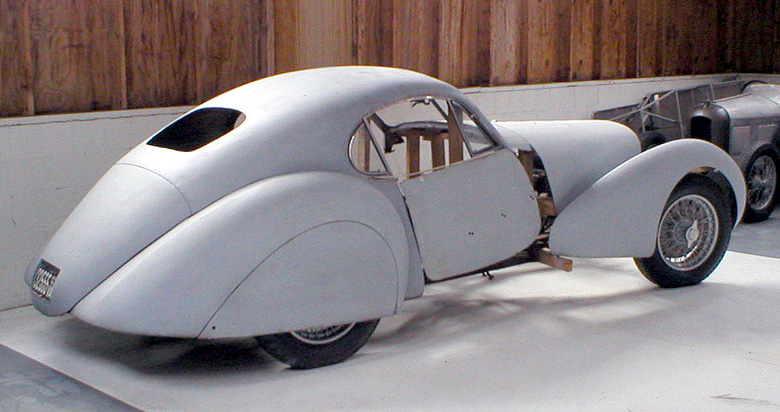
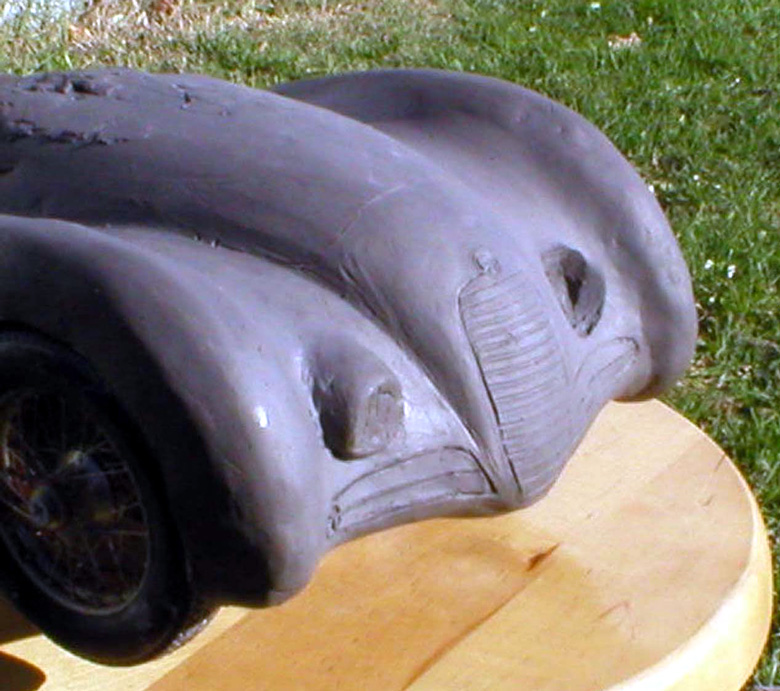
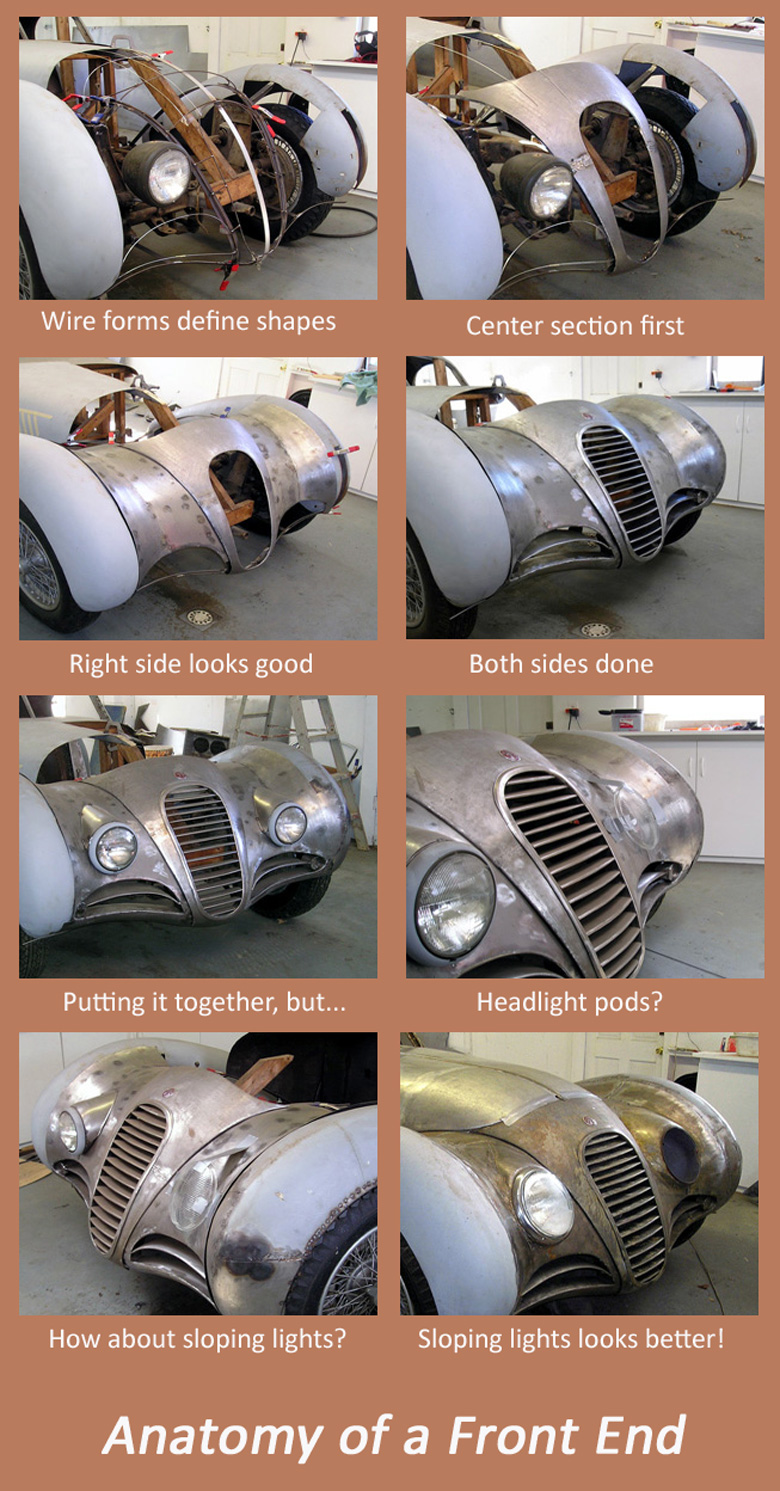
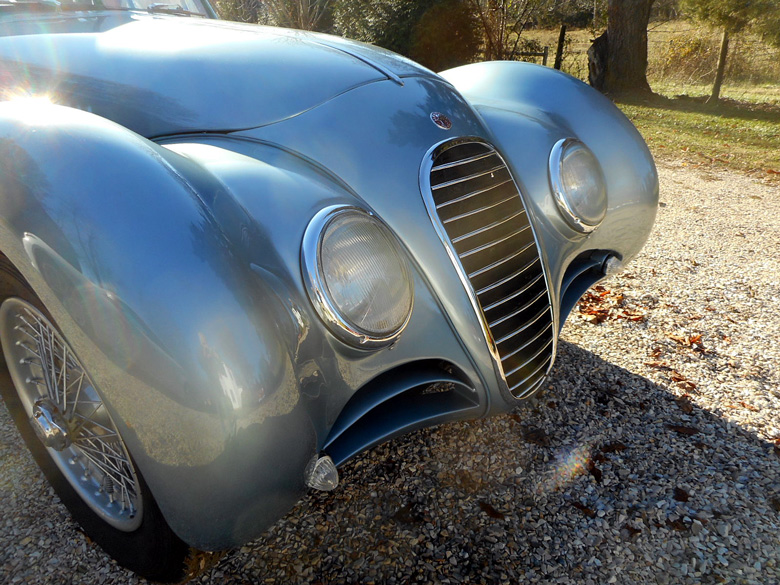
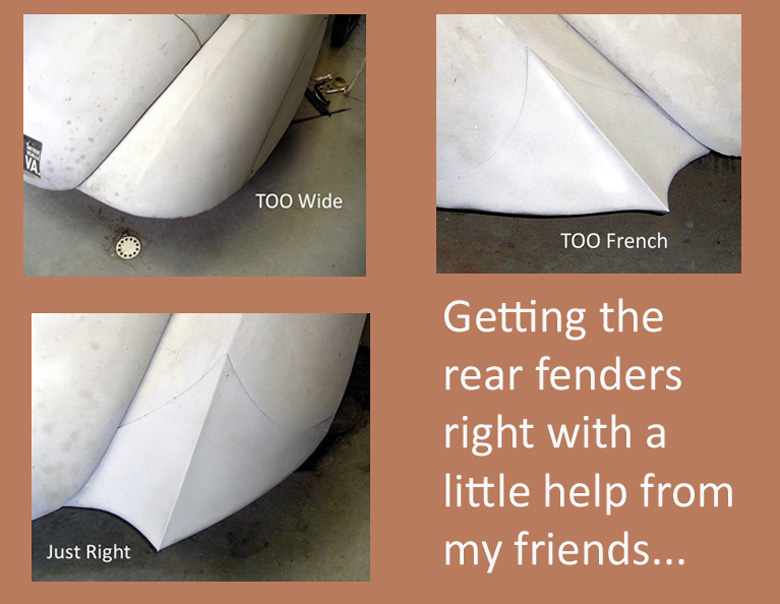
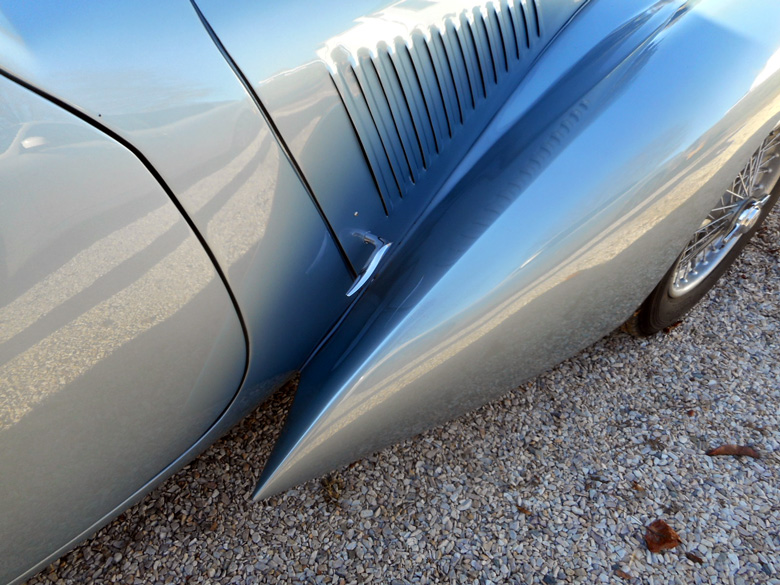
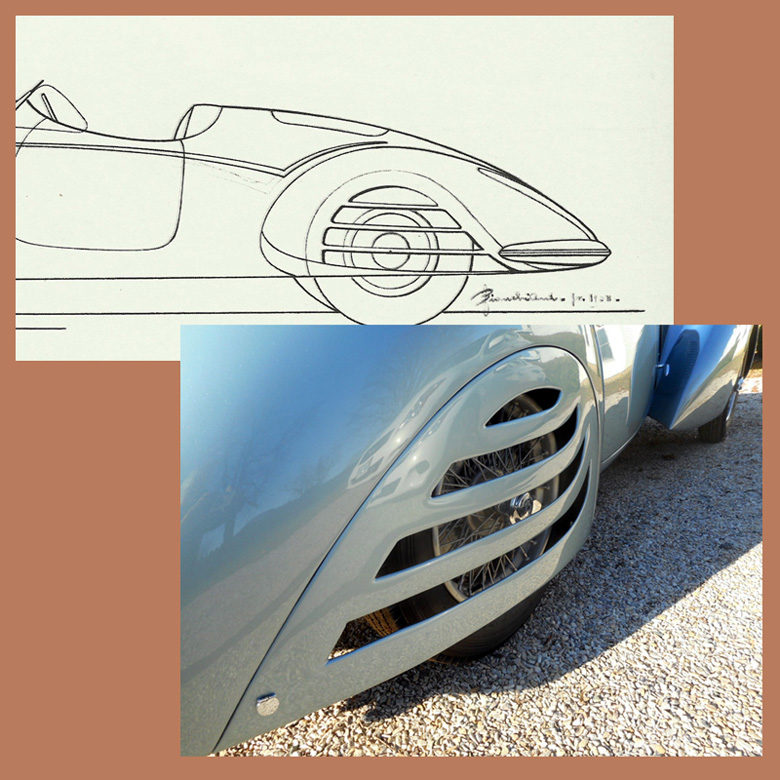
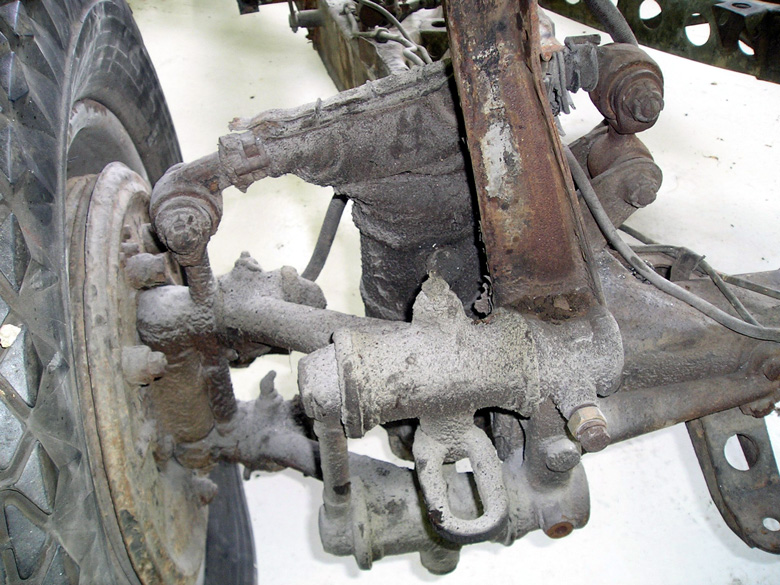
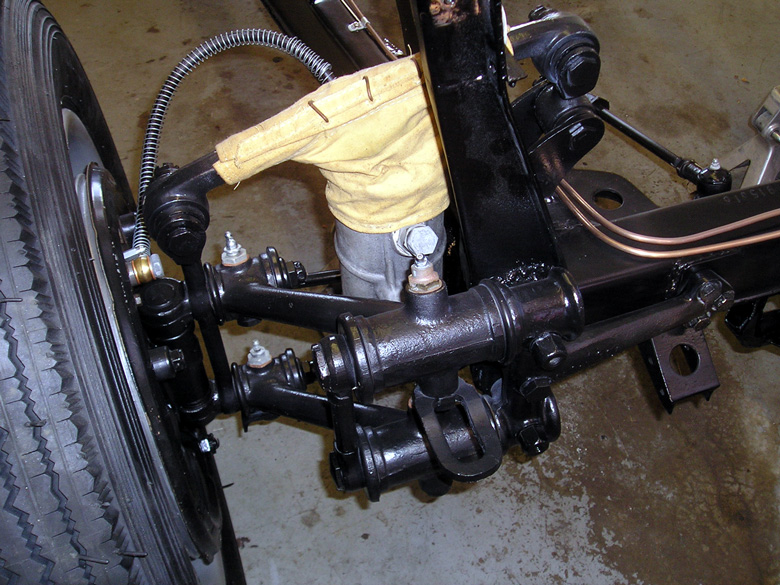
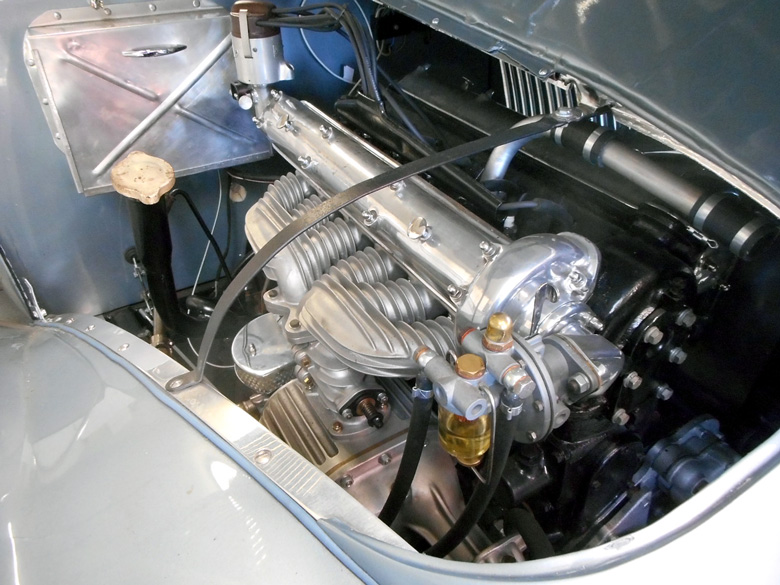
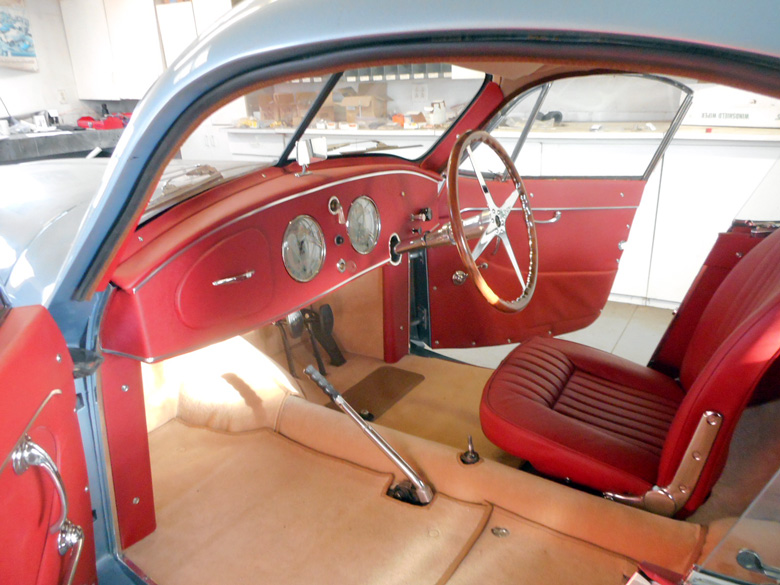
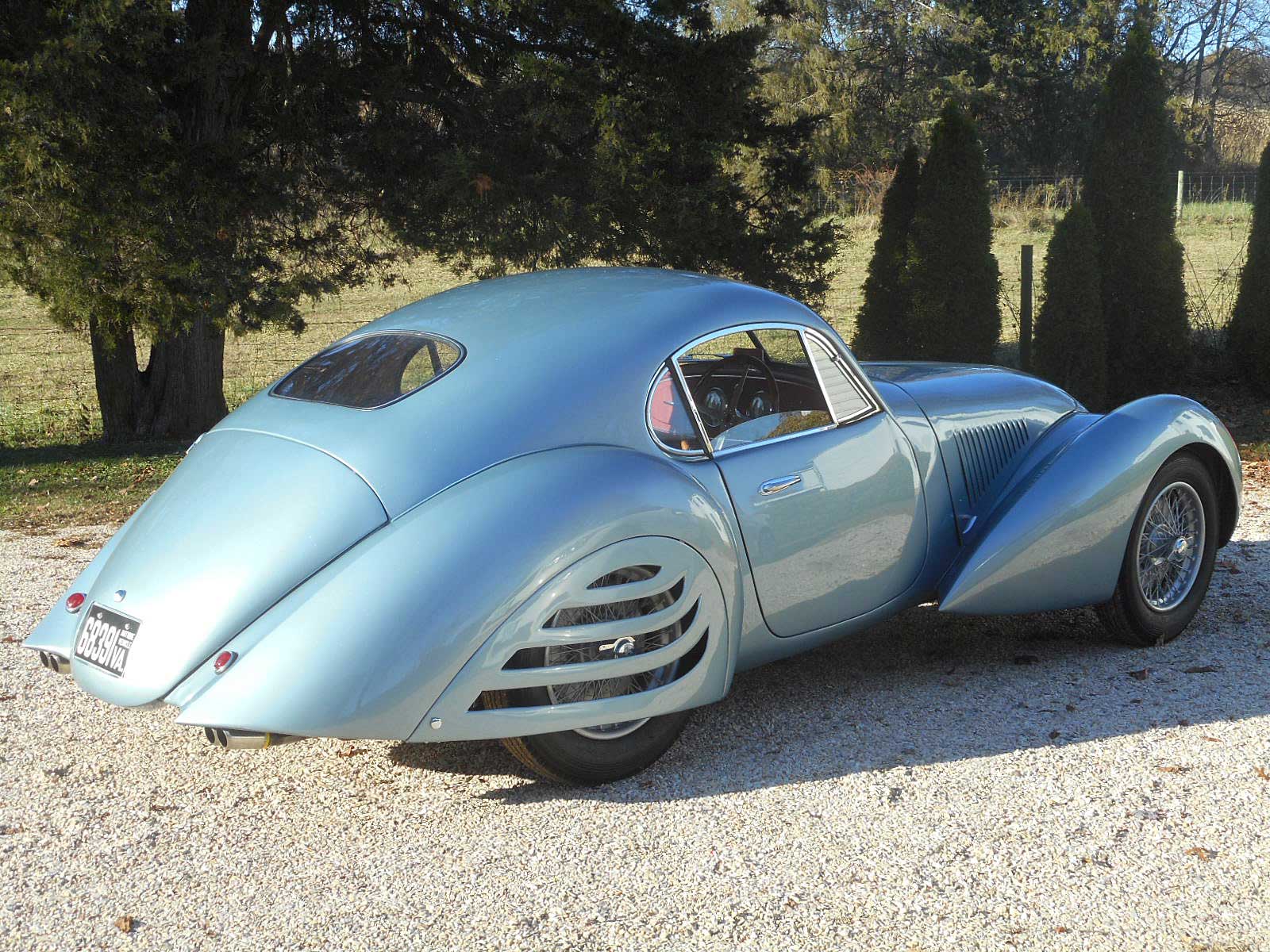


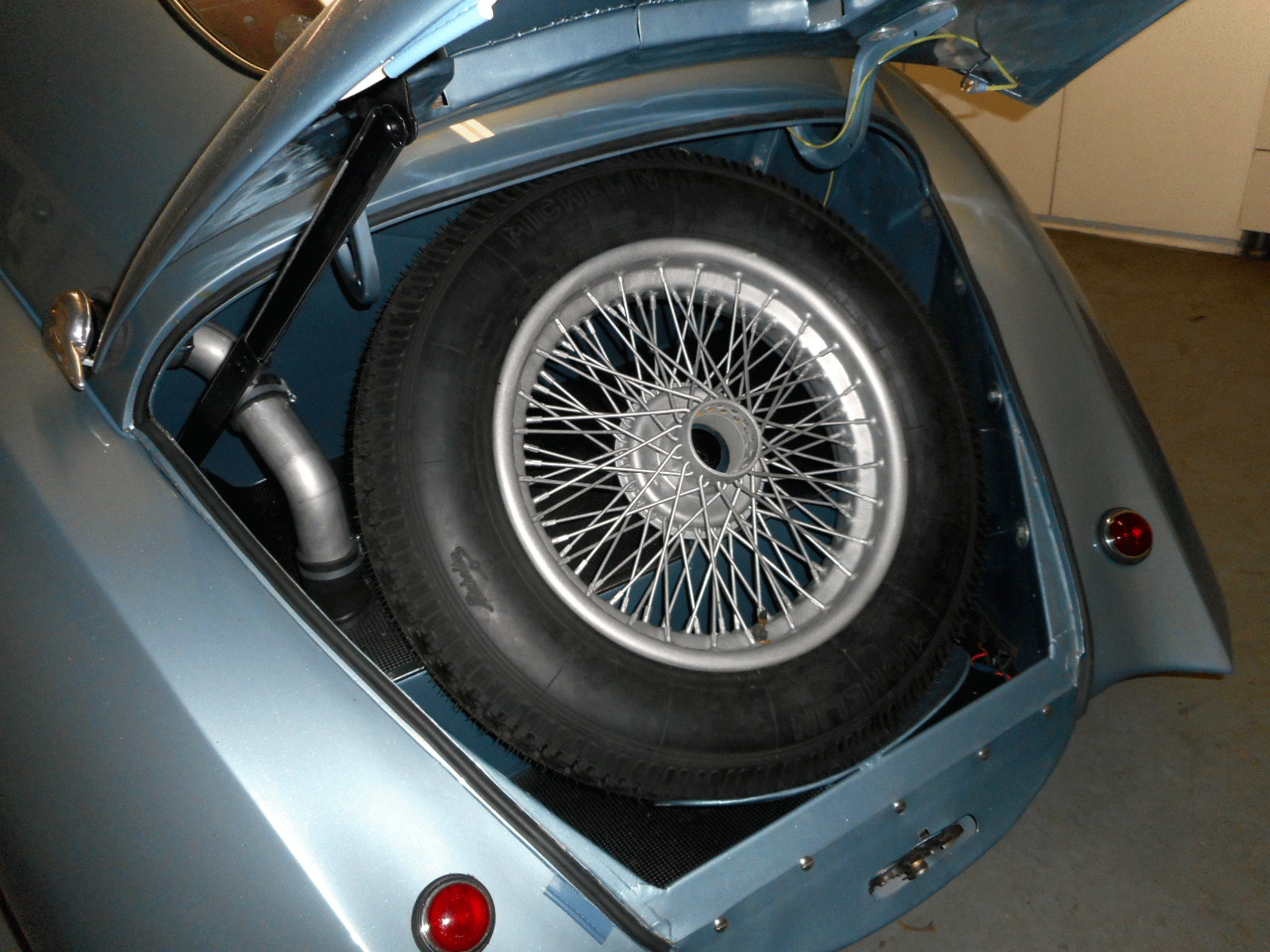
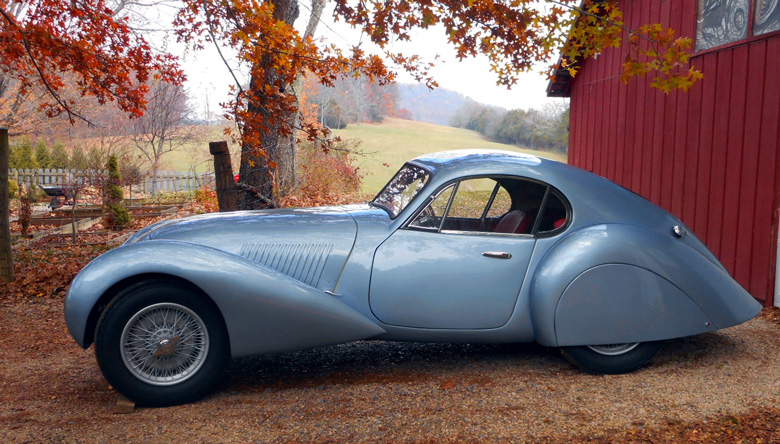
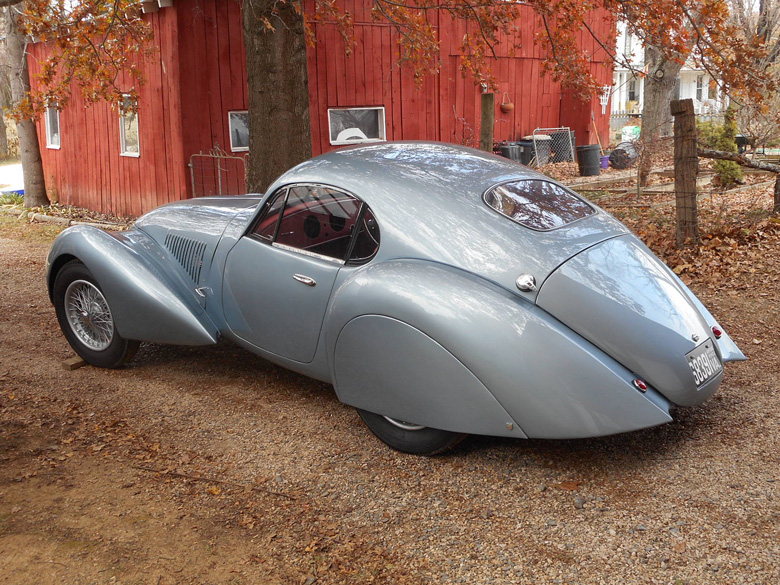
Beautiful car!
Pete,
As you know, I have been reading VT for at least a dozen years.
I must say that this is the best, most inspirational, well-told story that I can remember in all that time. It is astonishing, breathtaking even.
Congratulations to Mr. Wilson.
Molto bene!
Absolutely brilliant!!!!! Can I have one please??
Brilliant, along with the modest, self-deprecating account by a skilled, determined and aesthetically accomplished craftsman.
Bravissimo!
Wow, I think you did it! The paint color is perfect to show off all of your body work. And to understand both the materials used and the technique to assemble them……..and the patience, astounding! Now keep it, drive it, show it, have fun with it and be very proud of your accomplishment.
This Alfa Romeo retro creation is truly an expression of love and passion for the elment’s that are so appreciated from the Grand Art Deco Era of the 1930 leaving us with so many lovely automobiles and other expressions in architecture & fashion.
Belissimo Grande’ Paul
Cheers,
sam
That is one beautiful car, and appears as if it were an authentic coach built from the era! Hard to believe that this occurred over a period of 44 years!
Outstanding!
A project we all wish we had done. Wonderful results.
Absolutely superb coachwork and interior, rivaling the best Italian designers of lore. Time to think about a “VIP-Only” small-series production. Jay Leno would be a happy investor.
This looks spot on from every angle. I hope to see it in person some time.
I had the great pleasure of meeting Paul and his wife on their magnificent farm in the Virginia hills when they graciously hosted a stop on the Hagerty Amelia Or Bust Tour. We were treated with a tour of his great car collection in the barn (with birds flying about the rafters), as well as his metal forming demonstrations in his modest fabrication shop. Seeing Paul’s Alfa creation in person is so much more breathtaking then the fabulous photo’s here! Thank you Paul for being so accommodating and selfless of you time.
All I could say has been written above!!
Congratulations to both you and your wife [for bearing with you and supporting your dreams!] I, too, hope to see your car one day!
I am 3/4’s the way into my own creation of a retromod [nearly 7 yrs now], but no where near the complexity of what you’ve done.
Fantastic creation, reuniting Bugatti Atlantique, Talbot Grand Sport, Alfa 2.9 & 2300B in order to get the ultimatimate -and only- S/C 2500: what an accomplishment!
Impressive work, an automobile many would like to own and drive. Amities.
Paul,
You have done a wonderful job. I had ideas like you had on your project but never developed my fabrication skills enough to make a body. Have fun with this really great Alfa.
Fred
Very pretty car! I work in new car design studios, sculpting new cars- you did a great job. Looks generally like a Portout Talbot Lago Teardrop,but shorter, beefier, with your own nose on it.
Really nice!
Thanks SO much, everyone, for all your praise and enthusiasm. I am deeply moved.
Also surprised, actually. For two reasons. One is that I’ve discovered, through the years, how widely opinions differ on aesthetic questions. I can consider, say, two fender contours, and KNOW, with absolute certainty, that this one looks better than that one. It just seems to me like a fact. Then I talk with a bunch of other people and each of them has a different idea. It seems that none of them see things quite as I do. Understandably, they don’t see any reason why my judgment has any more validity than theirs. Each to his own, right? It’s just pigheaded arrogance to say that one shape is more beautiful than another. Hence the defensiveness you can detect here and there in my story.
I’m also surprised that someone hasn’t been scandalized by my criticism of the great cars of the era. What??? I’m saying a Touring-bodied 2.9 isn’t perfect??? Blasphemy! Before old cars got so valuable, their shortcomings, real or perceived, were described without embarrassment. Ralph Stein thought the Alfa 2.9 was fat and decadent compared to the 2.3, which he much preferred. But it’s hard to find such opinions in anything written in the past quarter century. The reason is obvious: if I lend my zillion-dollar classic to some magazine for a story, I’m not going to be pleased if they say it’s ugly.
I really appreciate all your comments!
“Superb” doesn’t go anyware near doing your creation justice!
Two points – Firstly, if it was mine I wouldn’t fit the slotted spats… and secondly
“Just what queue was I standing in when such talent was being handed out????”
Take a (well deserved) bow, sir.
On behalf of the staff of VeloceToday, we thank Paul Wilson for allowing us to publish his amazing story. It is an honor and a pleasure to work with him.
I’m sure we’ll see more of Paul and his creations in the next year ahead….
Pete Vack
There are some amazingly talented people in this world that we never hear of.
Well, after 44 years in the making, here is one of them.
Amazing journey and an amazing car!
Wish I could see it in real life.
Wow!!!
Agree with all above. It’s beautiful and seems to be the work of genius. If it were mine, (never happen), I would do the windshield surround in chrome or stainless steel
Fabulous coach work. I am a ALFA fanatic and would have no trouble considering this to be a true ALFA with custom coach work in the way cars of that era would have custom bodies. You are to be congratulated on a remarkable journey of seeing your dream come to fruition.
You made BETTER LOOKING ALFA Car is FANTABULOUS
time and patience plus true craftsmanship equals EXCELLENT
Hi Paul – I write this as the parent of my own Paul Wilson.
To think that you spent 44 years, two years more than my son has been alive, building this work of art is absolutely mind boggling. I thought that my 8 1/2 year restoration of my Austin-Healey was a long time, but I wasn’t having to design the vehicle as I progressed. You knew your limitations and shopped for parts that could be adapted to fit your vision. I really admire that.
My vote is for the solid spats. Your Healey Blue (or close to it) looks perfect on your Alfa Romeo! I hope that you have the opportunity to cherish your final work of art for many years to come.
It was my great satisfaction to visit Paul and his wife at his home in Virginia in 2011. At that time, after viewing the collection of beautiful classic cars in his garage, we talked about Paul’s fabulous Alfa creation. It is truly an amazing feat! Congratulation on this lifetime work creation, which can only be created by a man who knows what he wants and insists on the goal. I am wishing you as much driving pleasure as possible.
Knockout article.
Brilliant project, superbly executed.
I’m speechless – well nearly, because others need to know about it.
Well done Paul!
Brian Hernan is exactly right: the windshield surround should be chrome. I’ve already made up the pieces. Final fit, and chroming, need doing–and I’m not confident I have a good method of attaching it. I think there’s a glue that’s used on modern cars, but I haven’t done the research.
I’m delighted by Brian’s comment because it shows that he’s closely and critically examined everything about the design. Pushing readers to do that is really what the story is about–both parts.
Compliments for this achievement. Beatiful body with very interesting history. Well done!
Fantastic! A true work of art! Your vision and dedication is quite remarkable! Your craftsmanship is remarkable and I like many who have commented before me see your coach work to be “right on” to many designs created by famous coach builders of the era! Well done!?
I have just opened your e-mail then, after reading the article, scrolled down and could not believe how many had already made their comments (and Paul replying). That must be a record!! I am not going to buck anybody’s opinion. As they say in Italy “a capolavoro” (master piece). A rare occasion where several made their invited design comments ~ Paul very much made up his own mind. Bravissimo Peter
I’ve followed Paul’s progress in designing and executing the construction of this masterpiece. All I can add to all the other complimentary comments is, “I want that car”!
Bravo Paul ! I have followed this project for a several years, and I love the car. Paul is an inspiration to me. Wonderful to see the story in print. Thank you for allowing me to be one of your ‘style advisors’ although I feel like a novice in this field.
Just gorgeous. Paul, I admire your design choices, your skills in putting this together and, perhaps most of all, your tenacity in staying with it over the many years. Bravo!
As a follow-up, could we have a more in depth series of articles and pictures published on VT.
This is a once in a lifetime creation and I’m sure all readers would love to get more detail.
Even if it is spread over several issues, for it would take that to do this project justice.
I am one who has dreamt of creating my own car, but never had the money or capability to actually do it, so still
Maybe this will help us dreamers if we can see more of how it was all done?
More please!!!!
A big shout out to Pete Vack for this really, really good content.
Ron Kloetzli
The arc of the top of the doors, the windows, and the wind wing all look very XK 120 coupe to me. Are they Jaguar parts or just inspiration from the big Cat itself. In any event the car is a knock out. Glad that you added the super-charger, pay no mind to those who would say its not in the spirit of the car or that Alfa didn’t make one. Those cast fins on the intakes are priceless. If Alfa didn’t make one, they should have. BRAVO!
Congratulations, Michael Lugo! Yes, the side windows are from an XK120 FHC, plus the front part of the roof and windshield frame. I’ve already confessed to the theft of Lincoln Zephyr rear fenders, and the rear sheet metal (roof and trunk) from the Buick Sedanette. Now, for the grand prize, what car donated the basic front fender shapes?
The Alfa superchargers from the ’30s had pretty nice finned castings, too.
Thanks for your kind words.
Paul,
I have been a car designer, hobbyist, mechanic, teacher, learner and car lover for over sixty years and I can only say that this achievement is absolutely astounding. I know what you mean by being the designer and the fabricator, it does make things a lot easier but does not make the amount of work to be done less, only more. What you have done shows not only your intelluctual, aesthetic and mechanical skills but also your ability to set a far reaching goal against all odds and complete it. There it is for all of us to see and enjoy. Thank you.
Add the mechanics, suspension, etc: an unparalled achievement. The car looks wonderful, I especially like the size, somehow it has that “hugable” quality that is so endearing to me. It is tight and spare, different than the elongated proportions of most Alfa’s of the day.
Driving this car must be a very special experience for you. We all get that great feeling after making mechanical improvements to our cars but the first drive on this car must have been an emotional experience that was a once in a lifetime. A great example of creating something by first envisioning the ideal solution and then doing it against all odds.
God bless you for sharing that story with us all, it was an inspiration
DICK RUZZIN
Paul,
Regarding your comment about different opinions for a design solution.
The difference is that you the designer held the intellectual and aesthetic character of what you were creating and they did not. There was also some emotion there as it was “your” idea, it must be the best! Therefore the solution that made the most aesthetic sense to you was in concert with that vision. However, that does not mean that an alternate solution would not be valid as it is possible that others might have a different and better solution than yours. That is where your emotions come into play again.
To accept that alternate solution and move on shows great maturity and confidence in your abilities as a designer. You backed into it but you are one.
DICK RUZZIN